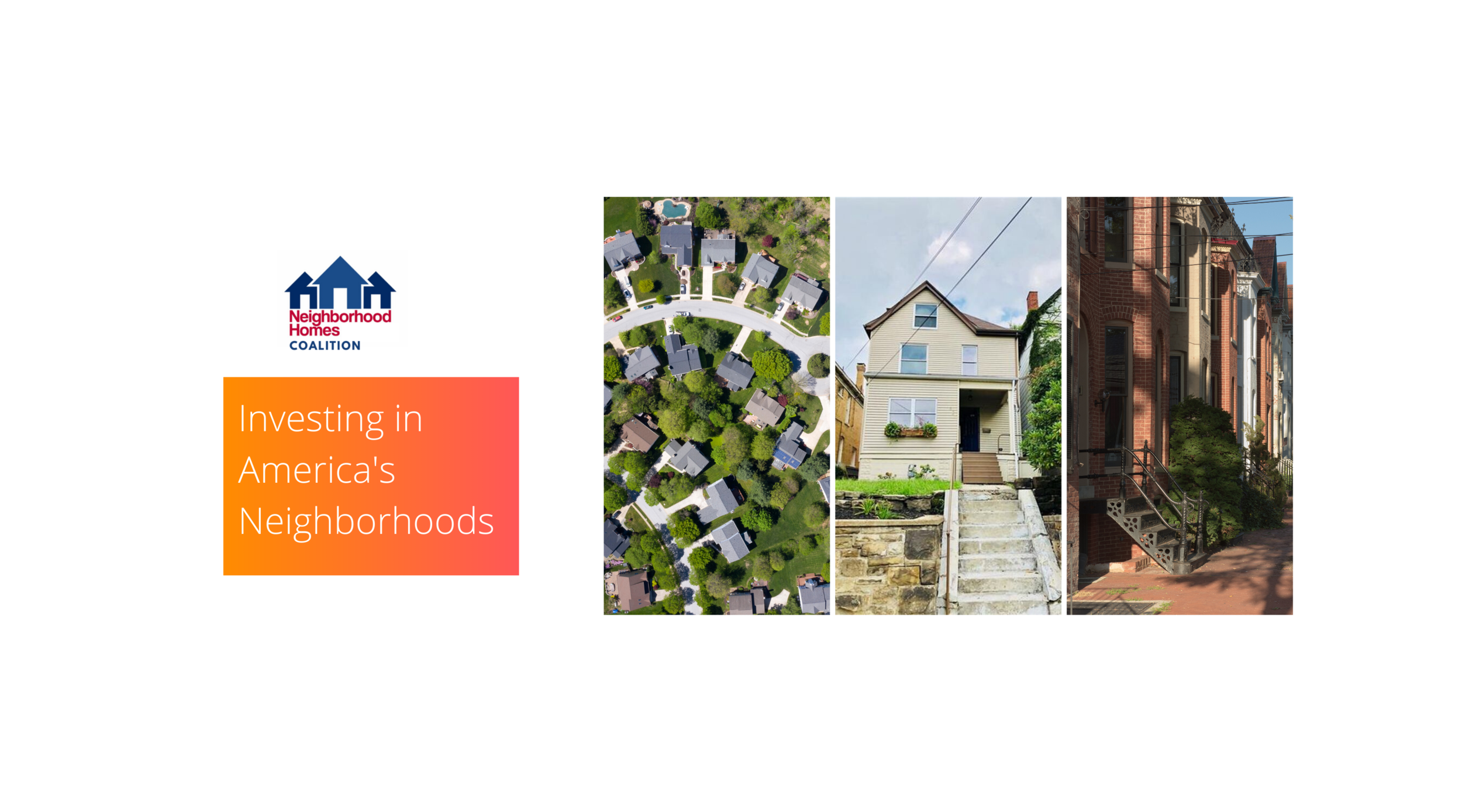Explore Interactive Map
Want to know if your city, neighborhood, or street qualifies for Neighborhood Homes funding?
Blue areas are eligible for Neighborhood Homes funding.
Step 1: Click on the image of the map to the left to access our interactive map.
Step 2: Click on the Congressional district to view the census tracts eligible for Neighborhood Homes.
House members introduce 'Neighborhood Homes Investment Act' HR.3940 to expand affordable homeownership opportunities and revitalize communities
U.S. Senators Cardin and Young reintroduce Neighborhood Homes bill, S.657 (March 2023)
Download the Executive Summary
Download Neighborhood Homes Presentation
Tax Package Comment Letter to Ways & Means Majority: October 15, 2024
The Neighborhood Homes Investment Act calls for the creation of a new federal tax credit that will produce new equity investment dollars for the development and renovation of 1-4 family housing in distressed urban, suburban, and rural neighborhoods.
In hundreds of communities throughout the country, neighborhood revitalization is being stymied by the “value gap” — the situation in which the cost of rehabilitating or building a home is greater than the post-construction value of the home.
While the Low-Income Housing Tax Credit (LIHTC) has provided an effective means of closing the development gaps in low-income, multi-family rental housing, there is no reliable reinvestment tool to close the value gap for our country’s declining 1-4 family housing stock— even though this housing typology accounts for the greatest percentage of all residential structures in places like Newark, Hartford, Pittsburgh, New Orleans, Springfield, Detroit, Flint, Stockton, Memphis, Cincinnati, Columbia, Indianapolis, and so many more cities across the U.S.
The value gap contributes to three interrelated conditions that challenge urban prosperity:
Blight, vacancy, and abandonment - In markets where the "numbers don't work" – e.g., it costs more to build or rehab a house than the property can be sold for – owners will walk away from homes that are no longer habitable and can't be refinanced or sold. Without a financing tool to close the value gap, even the most resourceful housing developers can not (and will not) be able to address the thousands of vacant R-1 zoned properties that burden distressed neighborhoods.
Conversion of homeownership neighborhoods to absentee landlord neighborhoods - The dearth of reinvestment dollars for distressed, low-density neighborhoods creates a favorable environment for absentee owners/investors who convert aging homeownership housing to rental housing in once stable owner-occupant neighborhoods. Poorly-maintained rental housing, owned by absentee landlord/investors, undermines quality of life and spurs declining property values in small and mid-sized cities across the country.
Racial inequity - The lack of capital for reinvestment in low- and moderate-income neighborhoods has exacerbated racial inequities, in particular, the great disparity between African American family wealth and the family wealth of every other ethnic and racial group in America. As reinvestment-starved neighborhoods continue to decline, so do the assets of the families that own property within them.
We estimate that each $1 billion in Neighborhood Homes investment would result in the following impacts nationwide:
25,000 homes built or rehabilitated
$4.25 billion of total development activity
33,393 jobs in construction and construction-related industries
$1.82 billion in wages and salaries
$1.25 billion in federal, state, and local tax revenues and fees

